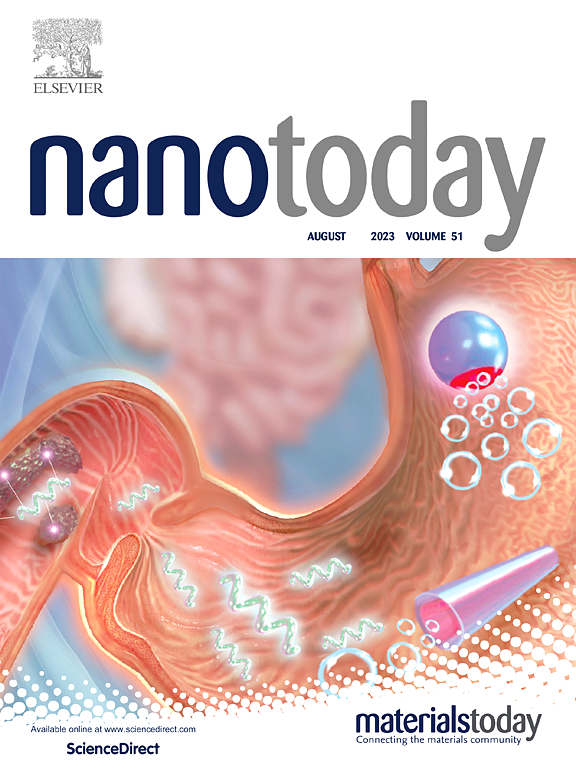铁螯合和抗氧化双功能纳米材料靶向损伤区血脑屏障可减轻脑缺血再灌注损伤
IF 10.9
1区 材料科学
Q1 CHEMISTRY, MULTIDISCIPLINARY
引用次数: 0
摘要
中风是发展中国家和发达国家发病率和死亡率的主要原因。溶栓后,脑损伤区氧化应激和游离铁水平迅速升高,导致神经细胞凋亡和铁凋亡。此外,由于血脑屏障的限制,大多数药物不能有效地到达损伤区域,对损伤附近的神经元进行治疗。在这里,我们描述了基于血小板受损内皮细胞靶向特性和狂犬病毒肽介导血脑屏障渗透能力的纳米脂质体,它们携带天然抗氧化剂番茄红素和铁螯合剂去铁胺。经纳米材料处理后,缺血再灌注小鼠脑损伤面积明显减少,脑细胞凋亡和铁下垂明显改善。这种具有双重功能的靶向纳米颗粒代表了治疗中风和其他与神经或外周缺血再灌注损伤相关的疾病的新方法。本文章由计算机程序翻译,如有差异,请以英文原文为准。
The bifunctional nanomaterials of iron-chelating and antioxidant targeting the blood-brain barrier in the injured area alleviated cerebral ischemia-reperfusion injury
Stroke is a major cause of morbidity and mortality in both developing and developed countries. After thrombolysis, oxidative stress and free iron levels in the area of brain injury rapidly increase, resulting in neural cell death via apoptosis and ferroptosis. Moreover, due to the limitations of the blood-brain barrier, most drugs cannot efficiently reach the injured area to treat the neurons in proximity to the injury. Here we describe nanoliposomes based on the damaged endothelial cell-targeting properties of platelets and the ability of rabies virus peptides to mediate penetration of the blood-brain barrier, carrying the natural antioxidant, lycopene, and the iron chelator, deferoxamine. After treatment with the nanomaterial, the brain injury area of ischemia-reperfusion mice was significantly reduced, and the apoptosis and ferroptosis of brain cells were remarkably improved. This dual-function, targeted nanoparticle represents a new approach for the treatment of stroke and other conditions related to neurological or peripheral ischemia-reperfusion injury.
求助全文
通过发布文献求助,成功后即可免费获取论文全文。
去求助
来源期刊

Nano Today
工程技术-材料科学:综合
CiteScore
21.50
自引率
3.40%
发文量
305
审稿时长
40 days
期刊介绍:
Nano Today is a journal dedicated to publishing influential and innovative work in the field of nanoscience and technology. It covers a wide range of subject areas including biomaterials, materials chemistry, materials science, chemistry, bioengineering, biochemistry, genetics and molecular biology, engineering, and nanotechnology. The journal considers articles that inform readers about the latest research, breakthroughs, and topical issues in these fields. It provides comprehensive coverage through a mixture of peer-reviewed articles, research news, and information on key developments. Nano Today is abstracted and indexed in Science Citation Index, Ei Compendex, Embase, Scopus, and INSPEC.
 求助内容:
求助内容: 应助结果提醒方式:
应助结果提醒方式:


